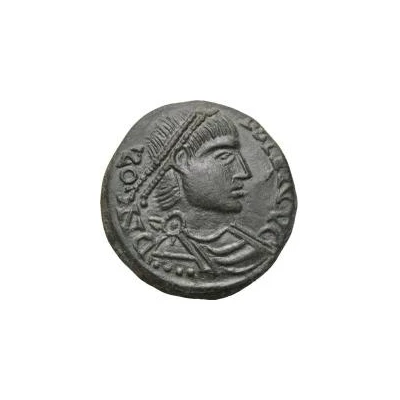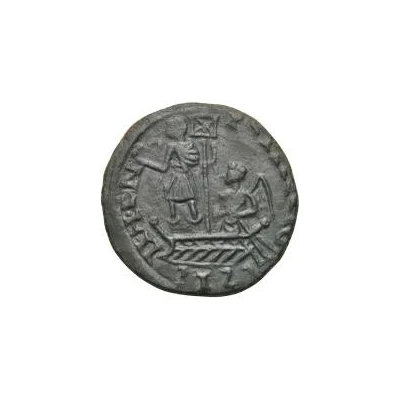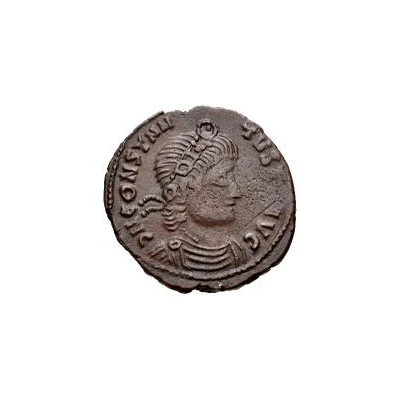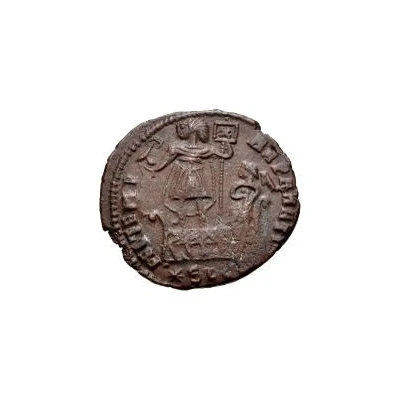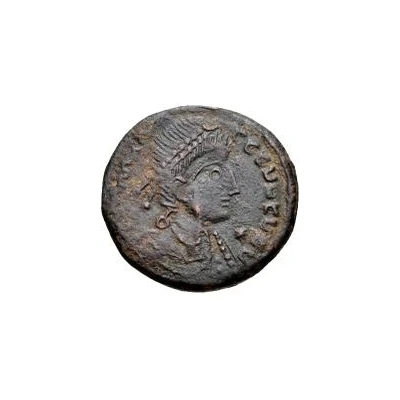
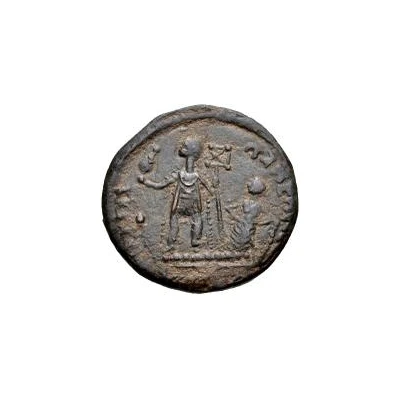

© Classical Numismatic Group, Inc.
Æ In the name of Constantius II; Round boat; with star
| Bronze | 5.91 g | 22 mm |
| Issuer | Uncertain Germanic tribes |
|---|---|
| Type | Standard circulation coin |
| Years | 348-425 |
| Currency | Solidus (circa 301-750) |
| Composition | Bronze |
| Weight | 5.91 g |
| Diameter | 22 mm |
| Shape | Round (irregular) |
| Technique | Hammered |
| Demonetized | Yes |
| Updated | 2024-10-04 |
| Numista | N#153938 |
|---|---|
| Rarity index | 97% |
Reverse
Two people on a boat with staff in-between, all surrounded by legend.
Script: Latin
Lettering:
[...]CTA - ACREOV[...]
[...]
Translation:
[Felicitas Temporum Reparatio]
[Happy times are restored]
Edge
Plain
Comment
This coin is said to be struck from the mid-4th to early-5th centuries. While the mintmarks on most of these types are of uncertain mints, the prototypes for those coins were either struck in Lugdunum/Lyon mint, with those two types both being first struck in 548. With that being said, that is the most-likely beginning date for this entire type of AE struck by an Uncertain Germanic Tribe.The denominations of bronze coins that are unknown to numismatists are referred to as Æ (AE), followed by the coin's diameter. The Æ part simply means the coin is made of a base alloy, and because the diameter of these coins is never exactly as intended, different numbers can appear after the Æ for the same type.
The exact lettering of the surrounding legend may vary; while some coins have legible legends, the legends of others may have been reduced to basically only lines.
Interesting fact
One interesting fact about this coin is that it features a unique combination of Roman and Germanic elements. The coin was issued in the name of Constantius II, a Roman Emperor, but it also includes a round boat and a star, which are symbols associated with Germanic tribes. This blending of cultural influences reflects the complex political and cultural dynamics of the time period.
